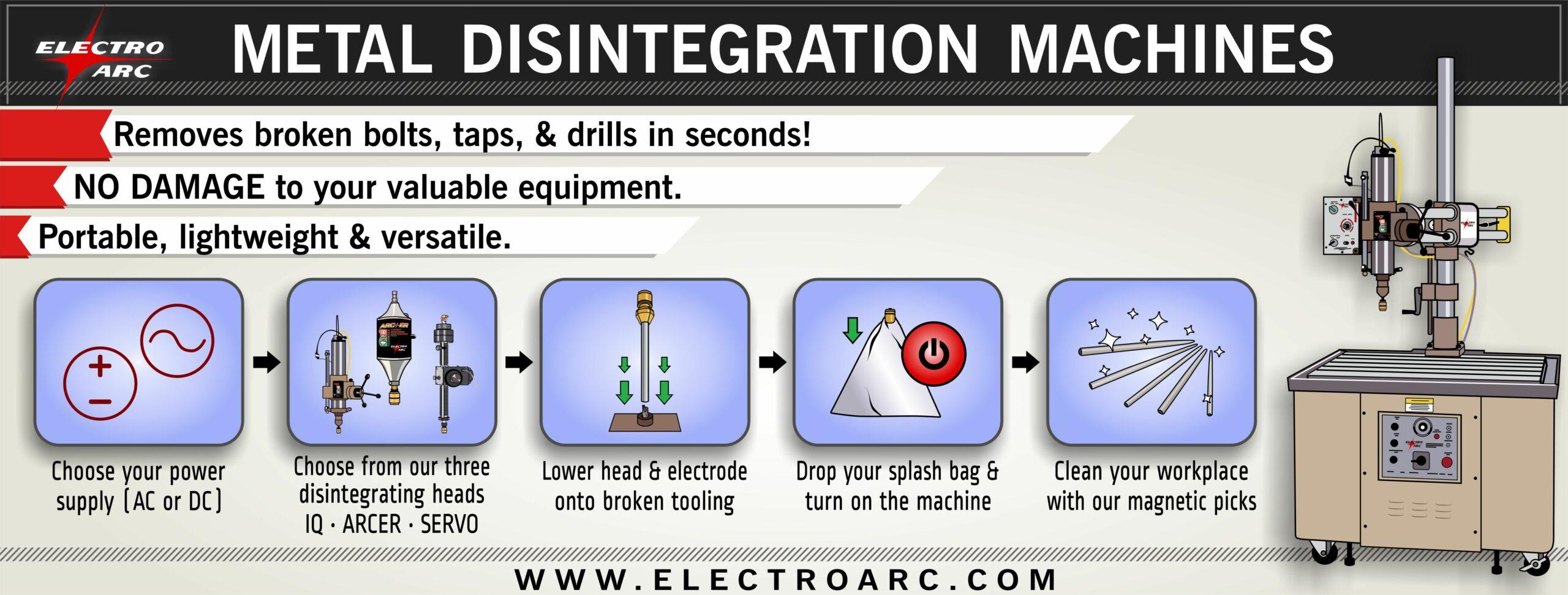Why Do I Need DC Cutting?
D.C. cutting is direct current cutting, which is a naturally occurring process that moves metal from a positive pole (+) to a negative pole (-) when current flow is initiated (switched on) and subsequently interrupted (switched off). You may not know that this process is as old as the storage battery. It was also responsible for the problems of the early automobile ignition points and plugs – excessive wear on the positive terminals caused by the rapid switching of a D.C. circuit.
D.C. cutting is the basis for all convention and wire EDM machine technology (not to mention Electro Arc Metal disintegrators) and predates the electric light bulb.

How Does DC Cutting Work?
D.C. cutting or EDM cutting occurs when an ionized path is established (switched on) between a positive and negative pole and then broken (switched off) to stop the current flow. The simplest example is what occurs when the (+) and (-) poles of a car battery are momentarily (with jumper cables) touched together (switched on) and then pulled apart (switched off). When the cable clamps are examined you discover a crater on the positive clamp and an equal amount of material added to the (-) clamp – EDM in action!
Harness this D.C process to remove broken taps, drills, and bolts quickly and easily. Minimum heat is generated and low power is consumed because polarity is the major moving physical property. High amperage, can waste power as a violent arc is created generating excessive heat and causing extreme electrode wear.
How do Electrodes Work in the Metal Disintegration Process?
Did you know that any conductive material can be used as an electrode? The more conductive the electrode material, the more effectively an electrical process works, and this is an electrical process.
Electro Arc machines can be used with inexpensive copper tubing. Copper has superior conductivity (next to silver), low cost, and is easy to work with. It has the added benefit of being very conductive both electrically and thermally to aid in removing residual heat from the cutting area. We use other materials as electrodes for cutting operations where higher temperature arcs are required to remove high-temperature materials such as high-temperature bolts that are alloyed with molybdenum and other elements.
You need D.C. cutting because you are constantly searching for a better, faster, cheaper way to get your job done. D.C. cutting gives it to you because it moves metal faster through polarity while minimizing heat and power consumption through lower amperage requirements that always accompany the use of polarity as the major moving physical property.
How does D.C. cutting compare to A.C. cutting?
A.C cutting is the creation of a violent arc between a high melting temperature (molybdenum/melts at 4748 degrees Farinheight and 2620 degrees Celcius) electrode material and a lower melting point material (tool/steel/melts at 2500 degrees Farinheight and 1371 degrees Celsius) and the fact that the lower melting point material (steel) will melt faster than the high-temperature material (molybdenum). You will want to use DC current with carbide because it cuts faster than AC, you may also need a DC machine if you are planning to use your metal disintegrator on larger bolts.
Electro Arc’s AC metal disintegrators were the first metal disintegrators available on the market, released to the general public for purchase in 1947. While competitors came and went over the years, Electro Arc remained the best metal disintegrator manufacturer purchasing competing brands including Elox, AC machines are generally cheaper than DC machines and provide a larger variety of options for customization.




